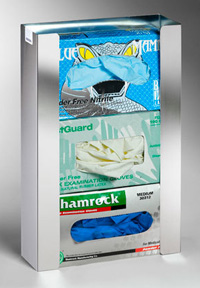| The Home page of ILPI's Safety Data Sheet (SDS) Resource, the leader in SDS information since 1995! | |
| The history and philosophy behind this resource. | |
| A curated collection of books and reference materials concerning Safety Data Sheets and closely related topics. | |
| Paste your plain text SDS into the SDS-Demystifier, and it will be converted into a hypertext-enriched document with links to detailed explanations of each key term. | |
| An extensive list of frequently asked questions about Safety Data Sheets including regulations, content, compliance, and more. | |
| A humorous take on Safety Data Sheet jargon. Fill in the blanks on our entry form to generate a personalized Unsafety Data Sheet to share with your coworkers. | |
| Since 1995, we've maintained this massive curated list of the best places to find Safety Data Sheets on the Internet. | |
| You are here! Way more than a glossary, this hypertext-enhanced resource covers hundreds of SDS-related terms and expert knowledge. Each entry includes both the SDS relevance and links to additional authoritative resources. | |
| Archived results of Safety Data Sheet related polls taken by some of our millions of site visitors | |
| The OSHA regulations behind SDS regulations, including the inspection guidelines and over 400 official interpretations letters under the Hazard Communication Standard | |
| Commercial suppliers of SDS authoring and management software as well as cloud compliance services. | |
| Commercial companies that will create SDS's for your specific needs as well as SDS translation companies. |

Safety signs, banners, and scoreboards? Get yours at Safety Emporium!
Definition
Dermal refers to a something used on or applied to the skin.
Transdermal refers to something (such as a medication or drug) being delivered through the skin. You may be familiar with transdermal nicotine or motion sickness patches which are applied to the skin.
Additional Info
Some chemicals can move through the skin very easily and can carry toxic compounds along with them that would not ordinarily penetrate the skin by themselves. One such example is dimethyl sulfoxide (DMSO), a common industrial solvent. Always use extreme care around liquids and wear proper gloves for the solvents you are working with.
Many chemicals can cause conditions such as dermatitis when they contact the skin. These effects can by chronic or acute depending on the nature of the chemical and the exposure. See our entry on cutaneous for additional information.
SDS Relevance
"Dermal" is commonly found in Section 11 (toxicological information) of a Safety Data Sheet, in reference to the effects of skin exposure. Therefore, be sure to use proper skin protection such as gloves or an apron; this information should be found in Section 8 (exposure controls/personal protection) of the SDS. The term is also commonly used in Section 4 (first-aid measures).
The skin is the largest organ of your body. If your body is splashed with a hazardous chemical, it is important to immediately rinse it off, removing affected clothing if necessary. Your workplace should have either drench hoses or an emergency safety shower if you are working with chemicals that can damage the skin. Ideally, the shower should have a privacy curtain but if yours does not, it's no time to be shy about disrobing. This is especially true for corrosives such as acids and bases or chemicals which readily penetrate the skin such as hydrofluoric acid and phenols. For example, multiple people have died after a single skin exposure to 2,4-dichlorophenol, several of whom were reluctant to use the nearest shower or disrobe.

Encourage your workers to wear their gloves with stylish safety dispensers from Safety Emporium.
Further Reading
- Dermal Exposure at OSHA explains how to prevent skin exposure to chemicals in the workplace.
- Glove selection and usage at the University of California, San Diego. Includes info about latex allergies and more.
- The U.S. CDC's NIOSH has a web site devoted to Personal Protective Equipment (PPE) and includes topics such as Skin Exposures and Effects as well as recommendations for Protective Clothing and Ensembles.
- Skin Anatomy from Gray's Anatomy.
- Dermal Absorption, EHC 325, an extensively detailed document developed by the WHO, ILO and UN.
- Anatomy of the Skin at Stanford Children's Health.
- Picture of the Skin at WebMD with a diagram and list of common skin conditions, tests, and treatments.
- The Annals of Emergency Medicine discusses Clinical Policy for the Initial Approach to Patients Presenting With Acute Toxic Ingestion or Dermal or Inhalation Exposure in Volume 33, Number 6, June 1999 (subscription required).
See also: cutaneous, dermal toxicity, dermatitis, PPE.